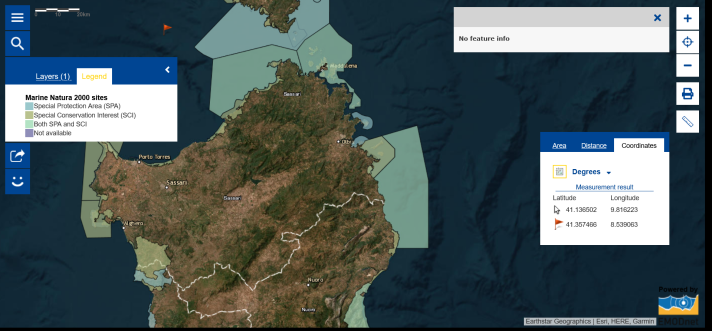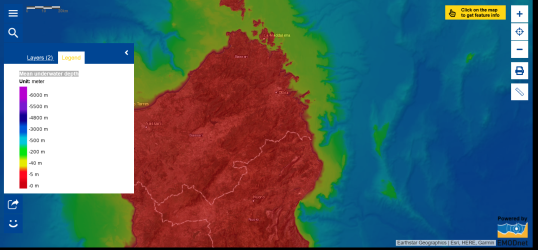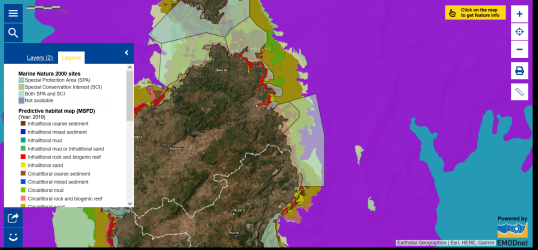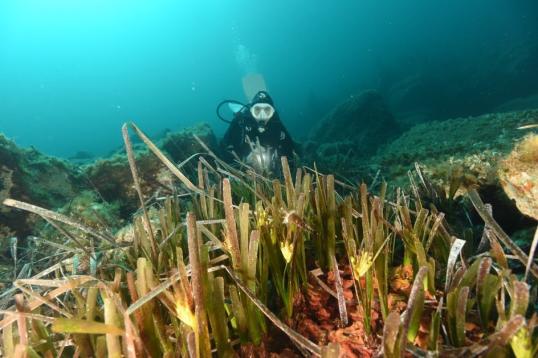|
This exercise was co-developed by the European Atlas of the Seas’ team and Martina Gaglioti, a marine biologist with a background in Geographic Information Systems (GIS) and scientific diving. She is a diver since she was 9 and she is absolutely enthralled by the marine environment in all its life-forms and geological features. Thank you Martina for your contribution to the Atlas’ Teachers Corner! |
Educational objective
Using a combination of map layers from the European Atlas of the Seas, pictures and information from a website, explore marine biodiversity in the Mediterranean Sea off the coast of Sardinia and learn about the role of Marine Protected Areas (MPAs) and Natura 2000 sites in nature conservation. Find the relevant map layers in the Atlas to answer the questions.
Age group
15-18 years old
Language
English
Competences developed with the exercise
- Understanding a map and locating a specific area on a map
- Combining different thematic map layers to extract specific information about an area
- Calculate areas in the European Atlas of the Seas and measure distances
- Analyse a text to find information
Exercise
1) Read Martina Gaglioti’s interview and answer the following questions:
- Which ecosystems has Martina explored in her diving activities?
- What is Martina’s favorite map in the European Atlas of the Seas?
- What event did Martina see after hundreds of dives in the same area of the Tavolara Marine Protected Area?
2) Locate the ‘Da Tavolara a Capo Comina’ Natura 2000 site off the coast of north-eastern Sardinia in the European Atlas of the Seas using:
- The base map ‘City template’;
- The map layer ‘Marine Natura 2000 sites’; and
- The following information: the closest municipality to this site is Olbia (Latitude: 40.918942 and Longitude: 9.49762). To do this, activate the measure tool in the Atlas by clicking on the ruler icon below the printer icon and find the above coordinates.
3) Using the information from the interview and the included links, can you explain what a Natura 2000 site is?
4) Using the measure tool’s area function, can you estimate the total area of the ‘Da Tavolara a Capo Comina’ site in hectares?
5) What is the mean underwater depth within the ‘Da Tavolara a Capo Comina’ site?
6) Open the ‘Predictive habitat map (MSFD)’ map layer. What are the main predictive habitats in this Natura 2000 site?
7) Close the map layer ‘Predictive habitat map (MSFD)’ and open the map layer ‘Posidonia oceanica distribution’. Do you think Posidonia oceanica could be present at this site? Where is it expected to be most present?
8) In the following picture taken during a dive, Martina is observing a Posidonia oceanica flowering event at the site. Using the description of the above map layer, can you explain what Posidonia oceanica is?
9) Search for further information on Posidonia oceanica on the Tavolara Marine Protected Area website. Based on this information, can you identify factors that can explain why Posidonia oceanica is more likely to be found in the areas that you highlighted under question 7?
10) Using the same website, can you explain why Posidonia oceanica is important for coastal areas? It is also important for other reasons. Can you give examples?
11) What can be done to protect Posidonia oceanica?
12) What is the most interesting thing you have learned with this exercise?
Helpful links
World Register of Marine Species
Mediterranean Posidonia Network
Regional Activity Centre for Specially Protected Areas (RAC/SPA)
Teachers' guide





